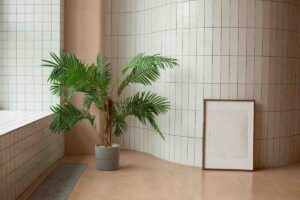Understand, indoor plants are not just ornament in our houses, they are living organism answer us with intelligence signals. By learning to understand these signals you will know how to keep your plants thriving in the environment you have provided for them. With indoor plants this guide will help you decode the language of the plants and respond to their behaviour effectively.
1. How do plants ‘say’ what they’re going to do indoors?
Each plant has different behaviors as it deals with what is commonly referred to as its indoor environment. They are physical responses to care routines, humidity, lighting, etc. These signals include changing colors, drooping leaves and the need for a plant to age and lod, all of which indicate how healthy and what a plant needs.
For example:
If your leaves turn yellow, perhaps you’re overwatering or maybe your plants are deficient in nutrients.
Leaves that curl suggest a lack of humidity, or draft exposure.
Spindly growth is another sign of not enough light.
By watching or reading about these behaviors you can use any or all of these to help you meet your plant’s specific needs.
2. Meaning of Common Plant Behavior Signals
Yellowing Leaves
Cause: Or overwatering, underwatering or poor soil quality.
Solution: Water only if that’s not done yet. You should use a good aeration potting mix and there should be drainage holes in the pot itself.
Leaf Droop
Cause: Environment and the wrong kind of overwatering, underwatering or root bound conditions.
Solution: Water regularly; don’t repot until roots are crowding the container.
Brown Leaf Tips
Cause: Or low humidity, or salt buildup from fertilizer.
Solution: Sort out the plant with the mist, or use a humidifier. When excess salts gather in the soil, they need to be removed periodically, either flushed or leached out.
Leggy Growth
Cause: Insufficient light.
Solution: If you haven’t gotten in the habit of moving the plant around, move it closer to a light source, or use a grow light.
Spotted or Discolored Leaves
Cause: Fungal or pest infestations.
Solution: Neem oil or an appropriate pesticide should be used to treat. Ensure good air circulation.
3. Observing Plant Behavior Signals Inside
To learn what your plant needs you have to observe it. Here are some tips:
Inspect Regularly: Look at the check leaves, stems and soil every week at least.
Track Changes: You should take notes or photos that will track your plant’s growth patterns and changes over its time.
Feel the Soil: Water only if the soil is too dry — touch it to find out.
Check for Pests: Webbing, sticky residue, or small holes will be signs of insects.
4. Plant Behavior Signals Indoors – how to respond
Once you’ve identified a signal, respond promptly to prevent further stress:
Adjust Watering: If unsure, err on the side of underwatering, because most indoor plants will overcome dryness better than overwatering.
Improve Lighting: Rotate the planted plants as required so they will receive equal exposure and won’t grow leggy.
Enhance Humidity: To create a micro humid environment use a pebble tray or group your plants together.
Feed Appropriately: In the growing season use a balanced fertilizer; in winter, feed less.
5. Indoor Plant Preventive Stress
An old saying that is true all the same. To minimize stress on your plants:
Choose Suitable Plants: Choose plants that fit your home’s light or humidity conditions.
Follow a Care Routine: Water regularly by following a routine schedule, and frequency of this is dependent upon your lifestyle.
Repot Periodically: In 1–2 years, refresh soil, and give root growth sufficient space.
Monitor Seasonal Changes: Change care routines as a function of seasons changes in variations of light and temperature.
Decoding Plant Behavior Signals Indoors.
Learning to understand plant behavior signals indoors is a bit like learning a new language. Through their subtle bodylanguage you can easily see and understand, how to have your plants survive in your home and turn your home into a jungle like one. But they are adaptive, resilient plants and they rely on you to make good conditions.
Endnote
If you know what plants need, caring for indoor plants can become a fun activity. If you pay attention to plant behavior signals indoors, you can connect deeply with your greenery and live in a healthier, greener space.
FAQs About Pant Behavior Signals Indoors
1. When these months further approach, it is important to ask yourself, ‘so how can I know if my plant needs more light?’
The leaves are pale, the plants are leggy. The messages are clear signs of insufficient light. Change the position or even put grow lights.
2. Why are my plants leaves folding?
Leaves that curling often mean low humidity, watering too much, or drafts. Do as needed for changing the environment.
3. Why I am getting brown tips on my indoor plants?
Most of the time, low humidity or salt accumulation is the cause of brown tips. Flushing the soil happens periodically and raising humidity.
4. When should I read water to my indoor plants?
Frequency is plant type and environment specific. Water the topsoil until the topsoil feels dry, then check your soil moisture level regularly.
5. My plant is losing leaves; why is that?
Overwatering, drastic temperature change or a sudden stress (move) can cause the leaf drop. Find out what caused that and adjust care according to that.
6. How can you bring a stressed plant back to life?
Crown the damaged parts with pruners, pay attention to adequate light, water correctly and think of repotting if roots are bound. Patience is key.



